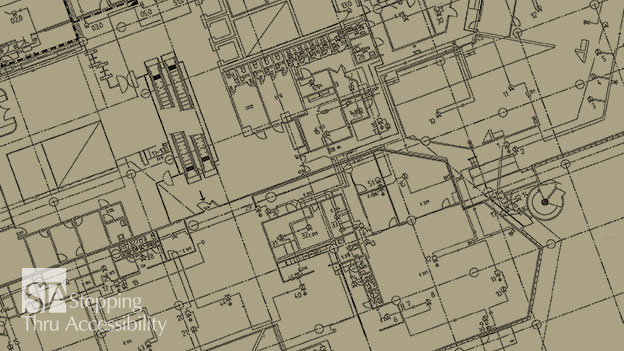Blog
Return to Blog »
Janis Kent, Architect, FAIA, CASp © January, 2016; rev April 2020 Acceptable tolerances are one of the major questions for built projects. No matter how carefully we delineate drawings or how well facilities are built, there always seems to be something that comes up that is not per plan or design. So after it is built, the question often is, a tolerance of ¼” or a tenth of a percent, for instance, is it acceptable? The answer is, of course – it depends. If you look at the ADA Standards under Conventions, it delineates 3 types of dimensions. These dimensions can be linear dimensions, or slopes, or operating force or speed. It does not matter – what matters is how the dimensions are delineated. And this could be how the dimension is shown in the ADA or how it is actually shown on the drawings. Absolute Dimensioning One type is an exact or absolute dimension. An example would be the required depth of an alternate roll-in type shower which is a 36” clear width measured to the center-point. Another example is the clear space between the back of a grab bar to the face of a wall of 1½” exactly. Before the 2013 California Building Code (CBC), toilets were dimensioned 18” from their centerline to the side wall as an exact dimension. Reopening devices on elevator doors are located at 5” and at 29” AFF. This latter dimensioning example is not a range but rather two exact dimensions. Specified Range Dimensioning Another type is a range, where an upper and lower limit are specified. An example of this would be the top of a hand rail where the top of the rail is 34” minimum to 38” maximum AFF. Toilets are dimensioned 16” to 18” from their centerline to the adjacent wall per ADA, and 17” to 18” now per CBC. Tactile signs which are dimensioned as 48” minimum to 60” maximum AFF measured from the baselines of the lowest tactile character to the highest. These are all a specified range. Open Range Dimensioning with Either a Minimum or a Maximum Limit (not both) And the third type is where there is only one limit to the range such as a door clear height of 80” minimum AFF, or 8.33% maximum slope on a pedestrian ramp. A parking access aisle of 60” minimum in width is another. The operating force for controls of 5 lbs maximum, or door closing speeds of 5 seconds minimum are other examples of open range with one limit. For both absolute and open range dimensioning, the installation is subject to conventional industry tolerances, if they exist, as well as field conditions. Specified range dimensioning, on the other hand, does not have any tolerances since the range itself provides the allowable tolerance. So how an element is dimensioned is critical. For instance, the bottom of the reflective surface of a mirror at 40” maximum AFF allows for an open range which may not be what you want as a designer since you might get an installation higher than 40” AFF which does not meet ADA. Perhaps it would be better to dimension the mirror as 38” to 40” AFF thereby providing a specified range. Another possibility is to provide an absolute dimension but make it less than the allowable height such as 38” AFF. Now the big question comes as to what is defined as conventional industry tolerances and not all items are actually defined. Currently there are no industry tolerances specified for pavers, whether brick, stone, or concrete, nor on wooden walkways. There also are no tolerance standards for when an element is part of an assembly. Summary In summary, we may want to review our standards for how we dimension our drawings. It has often-times been said, not to dimension to the limit as a way of safe-guarding items from being installed in non-compliance or to provide more than the minimum space than is required. But often-times this has not been enough. Perhaps another option is to set the dimension as an acceptable range. When construction starts this methodology should be discussed with the full team so everyone has an understanding of the standards being used. With some construction techniques it might be helpful to discuss how something would need to be repaired or even redone if in non-compliance so that everyone is aware of the critical trigger points. Then, verify and confirm you have your dimensions shown correctly. Be aware that your local City or County may have additional requirements that are more restrictive and providing greater access than the State or Federal requirements. Also, this article is an interpretation and opinion of the writer. It is meant as a summary – current original regulations should always be reviewed when making any decisions. © Janis Kent, Architect, FAIA, CASp 2016; rev April 2020Tolerances – Just how tolerant should you be?
